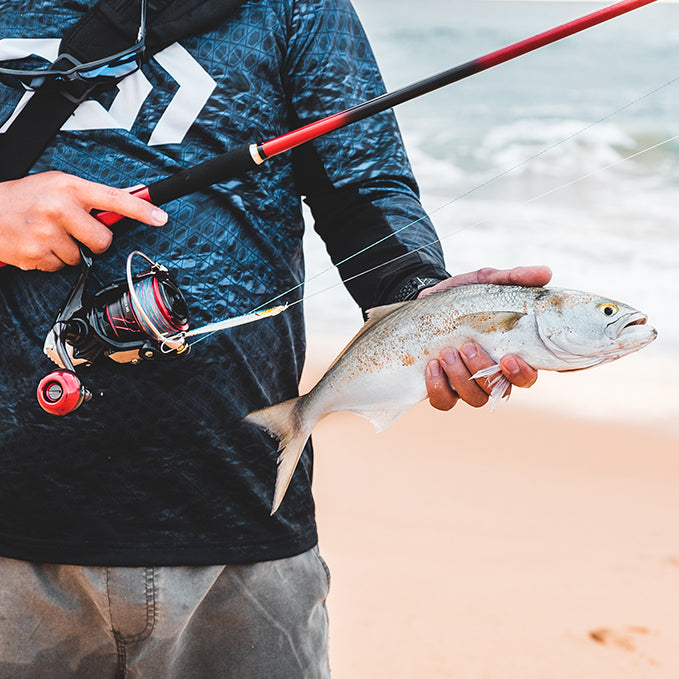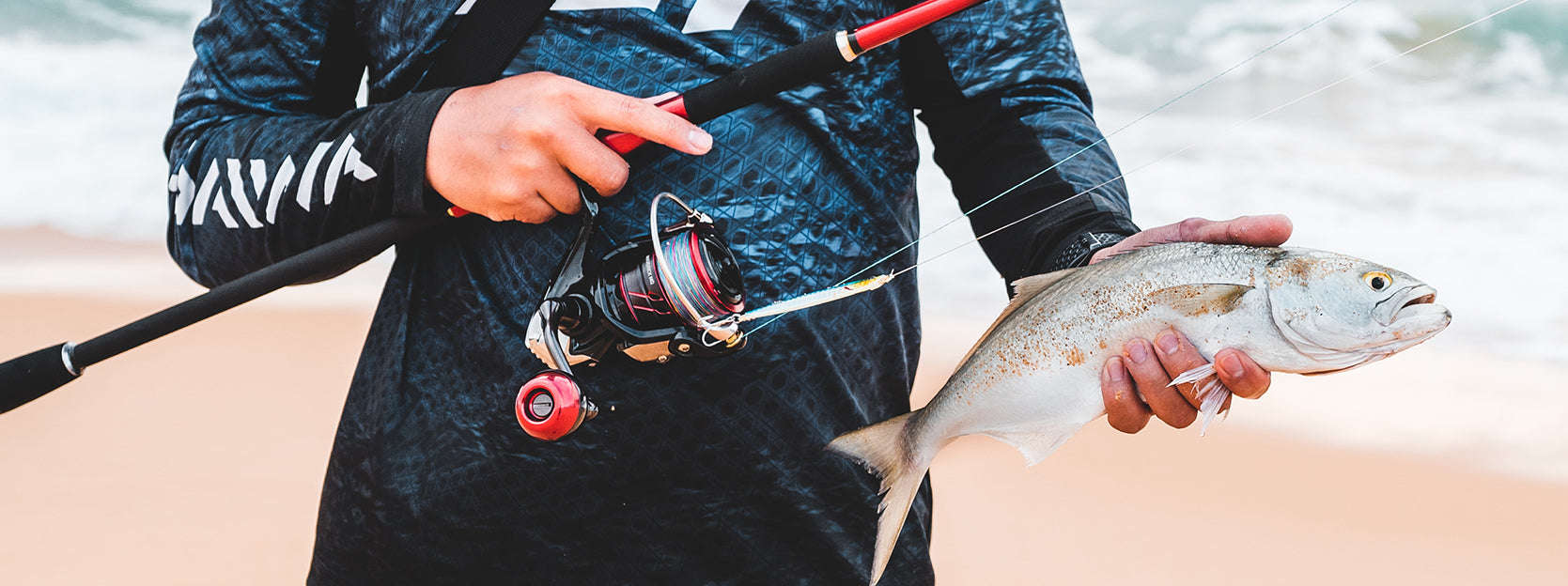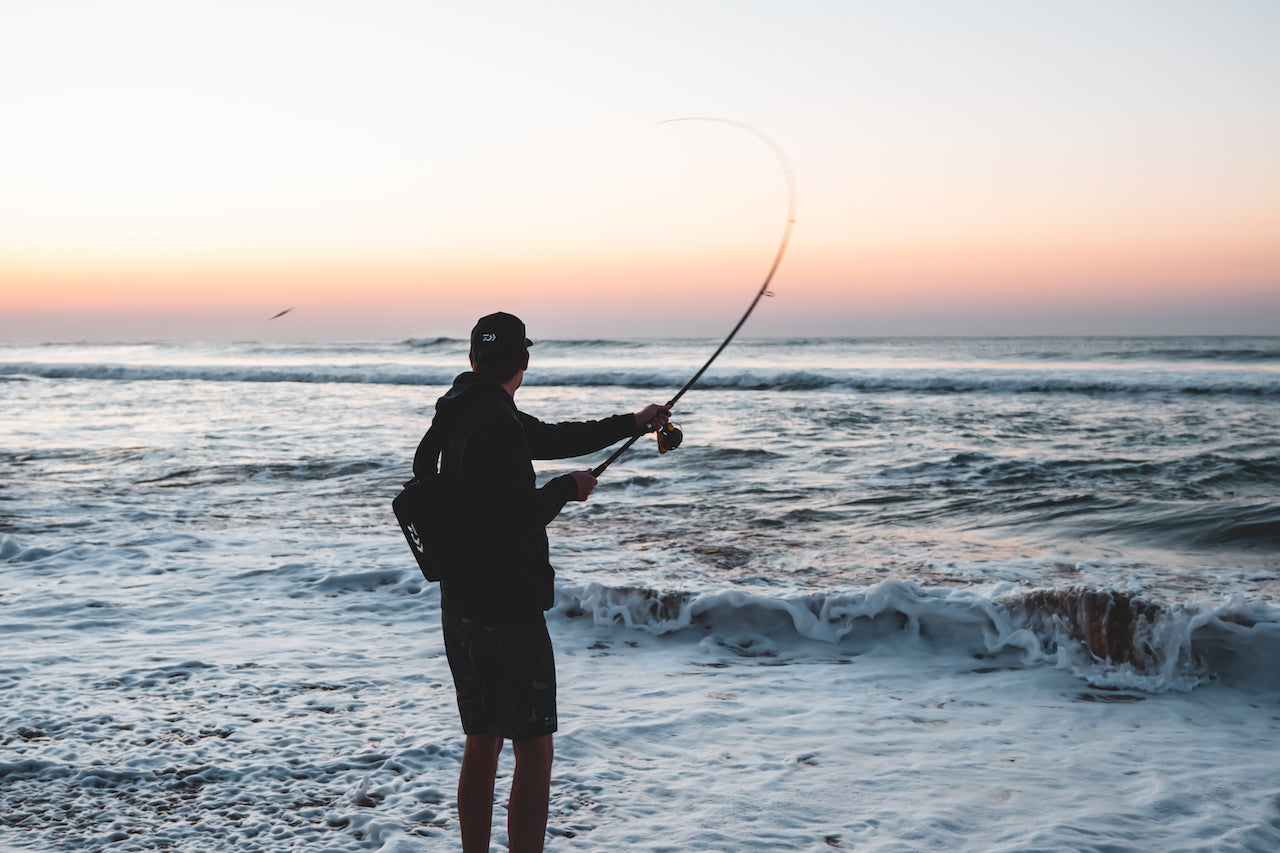Posted 14th July 2023
How to Catch Tailor: A Complete Guide


By Robert Thornton
We are lucky in this country to have such immense biodiversity in our marine environments. There are literally thousands of fish species for anglers to catch, but there aren’t many with a more widespread appeal than tailor.
Australia’s angling history with this fish goes back over a century, and they’re also an important species for various indigenous groups as well. These days, anglers of all ages, skill levels and backgrounds pursue tailor, often eagerly awaiting their seasonal migration or ‘run’ along the coast.
Tailor aren’t considered a difficult fish to catch, however if you’re new to the game there are a few important things to understand about them if you want to target them consistently. In this blog we’ll look at tailor biology, how to find them, how to gear up for them, and how to put it all together and catch them!

Life as a Tailor
In Australia, tailor inhabit tropical, sub-tropical and temperate waters from Hervey Bay in the east to about Exmouth in the west, including Tasmania. It is worth noting that they have a patchy distribution through the Great Australian Bight.
They can also be found in New Zealand, southern Africa, the Americas, and in the Mediterranean, where they are known by other names such as shad, elf and bluefish. The name ‘tailor’ refers to their scissor-like teeth like a tailor’s scissors, and also explains the affectionate Aussie nickname for smaller fish, which are known as ‘choppers’. Larger fish in excess of 3-4kg are often referred to as ‘greenbacks’.
Studies have shown that there are distinct populations of tailor throughout their range that migrate along a certain part of the coastline but rarely mix, and this may explain the noticeable gap in distribution through southern waters.
Generally speaking, tailor are fairly common throughout temperate waters during the warmer months, but will form large schools and migrate along the coast to more tropical waters through the cooler months to spawn. These fish mostly stick to the coastal zones and estuaries, and this is what makes them such a popular and available angling species. Tailor can be caught from beaches, headlands, breakwalls, inside rivers and creeks, coastal lakes, and at times, even offshore!
How to Catch Tailor
Tailor offer a lot to anglers as table fare and a sportfish, and Daiwa Pro Team member Sam Gilchrist understands this very well.
“They really are an iconic Aussie species,” he says, “they’re readily accessible up and down the coast, and once you get the basics down, they’re actually a pretty easy fish to catch.”
One thing about them, though, is that they are a migratory schooling fish that moves around a lot, and knowing where they’re going to be at certain times can prove challenging. If you want to find tailor, it’s important to identify the type of environment they like, and then when they’re likely to be there.

Finding Tailor
Finding these fish is probably the biggest challenge they pose to anglers. Once you find them, they’re usually willing to snaffle most offerings. Their habits are very similar throughout their range, so let’s look at three common environments (beaches, headlands and estuaries) and how to approach them.
Sam has a lot of experience fishing for tailor along beaches, and always looks for the same things on whichever beach he finds himself on.
“I really like beaches with gutters that run out to the sea,” he explains, “and you want to be able to fish the area where the waves break and roll into the gutter, forming wash.”
“This white water is highly oxygenated, and also acts as cover for the fish,” he continues, “They’ll chase bait like pilchards, whitebait and whiting in these areas, and will tend to avoid the clearer water.”
It should be stressed that Sam likes his beach gutters to be turbulent with lots of broken water, but not full of stirred up sand and weed.
Having a car to drive along a beach and actively search for likely areas is an excellent way to rule out all the barren water along beaches. You can get some additional tips for beach fishing here.
“Off the rocks, the more wash the better,” Sam says, “if there’s no wash, you’ll rarely catch them.”
“Spinning with metals from the rocks is probably my favourite way to catch them,” he goes on, “and these fish are usually bigger and darker on average – it’s where they get the ‘greenback’ name from.”
It’s worth mentioning that safety is a vital consideration if you plan to fish the rocks for tailor, especially when the more productive days are usually when the swell is up a little. For rock safety tips, read our rock fishing blog here.
In the estuaries, tailor are a little trickier to specifically target, and more commonly show up as by-catch. In these systems they are usually there to feed, so finding concentrations of bait is a good start, however there won’t always be tailor present.
“There’s no wash to concentrate them, and that’s why trolling is a good way to find them in the rivers,” Sam explains, “At night though, main bridges with lights that attract prawns and baitfish are good places to find tailor.”
Seasons can play a big role in success, with more northern parts of their range experiencing a greater influx of tailor schools from the end of autumn through to early spring. In most places though, they can be targeted year-round.
“We get them year-round in the washes, but winter is the peak of the run,” Sam says, “Bird activity and a good amount of wash and rips in the surf are good indicators for us, but there aren’t really any genuine indicators that the run has started.”
If you’ve found a likely area that you expect tailor to move through at some point, it might take a few exploratory trips to pinpoint exactly when they run in that area. Keeping your ear to the ground and reading reports, talking to tackle shop staff and other local anglers is another great way to stay across the tailor run in your area.

How to Catch Tailor on Bait
Tailor are an aggressive and competitive feeder, so large dead baits fished with light weight are standard for these fish.
“I would say that gar are hands down the best bait,” Sam says, “and next in line would be pillies, however they are softer and don’t re-freeze well.”
Some anglers also use strips of fish such as mullet, salmon, trevally and even other tailor! From this it’s plain to see that they aren’t fussy feeders, and what’s more important than the bait is how you rig it, and how you present it.
“A moving bait is the key to tailor,” Sam explains, “A lightly-weighted gar cast into the wash and slow-rolled back rarely fails.”
“A bait sinking through the wash will catch tailor, but you’ll be more likely to catch bream and other stuff when you let it sink too far.”
Dead baits for tailor are almost always rigged on ganged hook rigs with two or three hooks. Big baits and ganged hook rigs are important for reducing bite-offs. In days gone by, anglers would use a length of single-strand wire trace, however since then many have found that running wire reduces bites, and the extra length of a ganged rig is usually enough to avoid being snipped. Rigging the bait so that it sits straight by pinning the gangs along the length of it makes an ideal presentation, as it is less likely to spin or move unnaturally.
“Rigging pilchards straight is easy enough,” Sam says, “however with gar I like to clip the beak off to make it easier, as it’s harder to rig straight with the beak on.”
Bait fishing tackle usually consists of a 9-12ft long fibreglass or graphite rod, and a spin reel in the 5000-8000 size range. Any of the heavier Crossfire Surf rods with a Free Swimmer BR spin reel will make a great bait fishing outfit for tailor on the beach or rocks. J-Thread Nylon in 20lb is a good mainline option, with a short length of 30-60lb monofilament or fluorocarbon trace recommended if you’re targeting bigger tailor, especially from the rocks where you may need to lift them up onto the ledge.

How to Catch Tailor on Lures
Throwing lures into the wash for tailor is a growing pastime along Australia’s beaches and headlands, and it’s no surprise that many traditional bait soakers are now opting for lures to chase tailor.
“A 40-65g metal of any description is a must-have if you’re fishing the washes,” Sam explains, “however a shallow-running hardbody can be ultra-effective.”
“In fact, if I had to catch a tailor and wasn’t allowed to use bait, I’d use a shallow hardbody and change out the trebles for singles.”
Daiwa’s OT Jig is a suitable metal lure that has been designed specifically for casting, while a Presso Minnow 95SP and Steez Current Master 93SP-DR are two highly effective shallow hardbodies that will elicit aggressive strikes from tailor.
In calmer waters, such as in estuaries and coastal lakes, casting topwater lures is an incredibly fun way to target them, with the Infeet Slippery Dog 97F perfect for imitating the large baitfish and prawns that tailor love to eat. Soft plastics are also effective, however they will get cut up and destroyed very quickly by tailor.
With lures, anglers require extra performance from their tackle, as repeatedly casting and retrieving heavy lures in a salty and sandy environment will quickly wear down inferior equipment.
“A Sensor Surf of Saltiga Surf shore casting rod around 10-12ft is good for tailor,” Sam says, “but anything decent that’s light in the hands with a nice fast taper is fine.”
“The Sensor Surf, Saltistand Saltist MQ reels are all great for shore casting,” he continues, “They’re good on the rocks and sand because they’re tough, and they’re not a Saltiga or Certate, so you won’t be as worried about damaging them.”
“On the beach I like to run 30lb braid and 30lb leader on a 5000-size reel, however on the rocks I’ll upgrade to a 6000 or 8000 reel and 40-60lb leader, because often you need to lift them.”
In the estuaries, your rods don’t need to be nearly as long, as you’re not trying to hold your rod above the shore dump, and you don’t need to lift or drag fish up to where you are. A standard estuary spin rod about 7-8ft long in the 2-4 or 3-6kg range is perfectly fine, just remember to fish with at least 20lb leader and to use lures around 80mm or larger to lessen the chance of a bite-off.
Tailor-made Fun!
If you’re yet to experience a hot bite on tailor, start scoping around your local beaches, headlands and estuaries for likely areas. If you live within their natural range, chances are you’ll be able to suss out a few suitable areas, and with just a bit of reconnaissance and trial and error, you’ll be able to figure out your local ‘run’ of tailor!
















